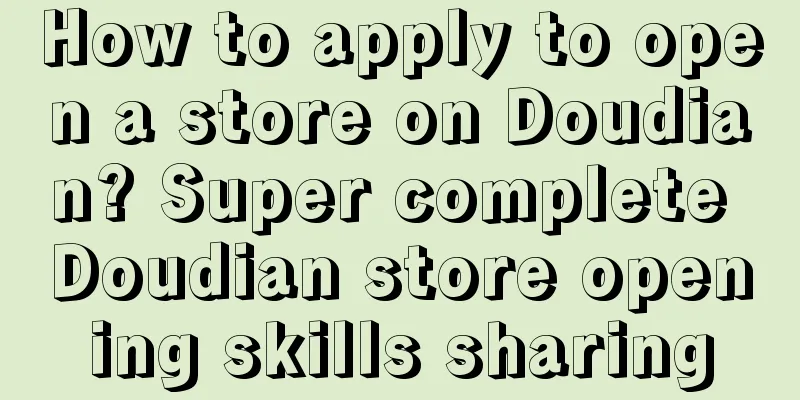Still obsessed with product function upgrades, it is difficult to create a hit product

No matter what field you are in, how new consumer brands grow is always an interesting topic. New consumption has been very popular in recent years, and everyone has different opinions on what is new about it. Some people say that the "new" lies in the stratification of consumption, with consumption of daily necessities downgraded and consumption of luxury goods, tourism, digital products and other experiential products upgraded. But this does not explain why there are so many hot products such as a whole bottle of water for staying up late and a ton barrel that meet the basic demand for drinking water. Some say that the “new” is in the scenes created by cutting-edge technology and media. However, if we only start from technology, we cannot explain many low-tech but popular products such as the “First Snow” seasoning jar of the Palace Museum Cultural and Creative Industry and the Perfect Diary National Geographic eyeshadow. So what’s new about new consumption? In fact, new consumption does not refer to new product design, but that these products provide new value to consumers. If consumers in the past valued products’ ability to solve problems, consumers today value the emotional value that products bring. I expressed a similar view in an article four years ago titled "What Do Middle-Class Consumers of This Era Really Want?", but that article mainly analyzed new demands that did not exist in the past. In this article, I will share with you how to create a hit product under the proposition of new consumption. 01The emergence of new consumption is often closely related to changes in consumption paths. In the classic shopping path, when people have a need, they will naturally think of related categories, such as drinking herbal tea when they are afraid of getting a sore throat after eating hot pot. If there is a strong brand in this category, consumers will directly buy products of that brand, such as Wanglaoji. However, the emergence of content e-commerce in recent years has changed the shopping path of many people. When you want to shop, the first thing you do is not to open Taobao, but to check Xiaohongshu. This is a major trend, from "scenario needs-finding products" to "product content-matching needs", that is, from "people looking for goods" to "goods looking for people". Correspondingly, the brands that originally played the biggest role in finding products (as a shortcut for the brain to make decisions) have seen their roles weakened in the new links, creating opportunities for new consumption and new brands. If traditional marketing is to tell consumers how great your product functions are and make them believe you, then the most important thing about marketing on the new link is to make consumers like you at once. The reason is simple – consumers only see a product for a very short time. You may say that this is really mysterious. I can’t even make everyone like me at once when I’m dating, so how can a product do that? Here I would like to share a case with you to see how Lego fell from the bottom of the toy empire and then became a toy that children love at first sight. I believe you will be inspired. Lego is the world's largest toy company, and it has been doing very well since its founding in the early 20th century. By 1992, Lego's global building block market share reached a historical peak of 80%, but there was a huge haze behind it. In 1988, LEGO's patent for its "self-locking bricks" expired, and the company immediately faced two major pressures: first, various low-priced imitations flooded the market, and second, electronic games became popular, squeezing out a large amount of children's play time, causing the company to suffer its first annual loss in 1998. Facing the pressure, Lego made two major explorations. The first was to directly move towards electronic games and launch virtual building blocks, spending a lot of money on R&D and modeling. Then Lego made a second attempt to make itself more complex and high-end to differentiate itself from low-priced imitations. It launched a new electronic educational toy "Exploration Series", adding new elements such as pulleys, which looked nothing like Lego. Consumers were not buying into these two directions. The mistake Lego made was that it only focused on its competitors and ignored its own advantages: comparing the playability with video games and complicating the simple fun of building blocks. In 2004, LEGO made a major decision to reverse its decline - returning to its core strengths and making good LEGO bricks. They developed social LEGO bricks (such as board game bricks) and developed scenes for children to play with LEGO in a social way. Then they developed IP stories and cooperated with more movie and animation IPs to launch limited edition bricks. I tell you the story of Lego not to talk about how to enter the building block toy market, but to share with you the successful strategy behind this great turnaround - making products that are obviously Lego, but unprecedented. Similarly, if you want to create new consumer products, you have to make products that are good at first glance. Specifically, it means " a product that is obviously in this category, but has never been seen before." 02Many people tend to equate innovation with novelty and make products that look different, but it is often difficult to succeed. Because the key point of this sentence is that you cannot make a product look unfamiliar to consumers, but you also have to make it look unprecedented at first glance. This requires you to strike a good balance. Why do these cool-looking products fail? It’s precisely because they don’t look like any of the tools we are familiar with. Research by cognitive psychologists shows that our liking is closely related to familiarity . Humans are naturally resistant to unfamiliar things. This is because the living environment was dangerous thousands of years ago. From a big beast to a small poisonous fruit, it could endanger life. In this case, the most favorable choice for survival is to only contact the familiar and stay away from unfamiliar things. This thinking habit has always existed in our genes. Classification helps familiarity, and familiarity increases favorability . Our brains tend to categorize familiar information. If you think about it carefully, when you were studying, the first time you read a book, it was often linear from beginning to end. When you review it for the second time, your brain will naturally categorize the knowledge in it, and you will feel familiar and deepen your memory of the knowledge. At the same time, classification can also effectively solve the problem of cognitive mismatch . If you want to introduce badminton to a child, if you start by telling him the rules of the game: "21 points in a game, best of three games", he will most likely be confused. You think the rules of the game are important, but in fact, the best way to introduce badminton is to say that it is a "ball game." Because you are too familiar with badminton, you will ignore the fact that badminton does not look like a ball. This is a typical cognitive mismatch between products and consumers. When you say this is a ball, the child will think of the game, the venue, the score, the need to hit the ball, etc., which is consistent with your understanding of badminton. Categorical thinking is so important that many theories we are familiar with, such as positioning theory, mental accounting in behavioral economics, the natural classification law in biology, and the Cechni effect in sociology, are all manifestations of categorical thinking. What kind of product can be identified as a category at a glance? Let’s take a look at the following popular products: I believe you can tell what products they are at a glance: a spice jar, a bottle of beverage, a kettle, an ice cream stick, an eye shadow box. The secret lies in the appearance of key features, such as the wooden stick of the popsicle and the straw of the water bottle. 03Making consumers familiar with the functions is only the first step. Next, I will talk about how to achieve effective differentiation. I said above that creating a hit consumer product means creating a product that is “obviously in this category, but has never been created before.” Stop here and think for 5 seconds. If I give you a proposition, if your boss asks you to make a bottle of beverage better than ever before, what would you think? If you let your imagination run wild, I believe you can come up with a lot of them. For example, there used to be special drinks for athletes, so we can make a special drink for astronauts, or a special drink for e-sports. But to create a hit product, the key to success lies in the fact that this "unprecedented" product must be both special and in line with the aesthetic tastes of most people. The more people there are, the larger the potential market. What is tested here is the understanding of social consensus. How should we think about it? To understand social consensus, we need to observe its source and see how the social consensus on consumption came about. There is a concept called spending transmission. In a society, the pursuits of the rich will be imitated by the upper middle-class families who associate with the rich, and then the ordinary middle-class families around them, and the consumption habits will be transmitted layer by layer like a waterfall. Edison promoted the use of electricity, the household automobile replaced the horse-drawn carriage, and even the habit of eating potatoes began with the upper classes of each society. From the 20th century to the early 21st century, the mainstream of the development from the Industrial Revolution to the Internet was technology and efficiency. However, the rapid development of technology has stagnated in recent years, and coupled with the global epidemic, consumption orientation has shifted to health and culture. We will find that products that hit some mainstream concepts will enter the channel of consumption upgrading. For example, in an era of pursuit of technology and efficiency, everyone is pursuing better mobile phones and computers, as well as taxi-hailing and food delivery. However, when the pursuit of technology and efficiency reaches a bottleneck and the next window of opportunity arrives, businesses that can embody health and cultural values will be in the spotlight for some time to come. 041. Health valueAs society develops, having enough wealth is no longer worth showing off. People prefer to post content about fitness and travel on WeChat Moments. The fundamental reason is that the activities show that they have a lot of free time, and free time is very precious in the busy modern society. The popularity of fitness and travel as social currency has brought about another result, which is that the concept of health has become deeply rooted in people's minds. If you are a young person, even if you don't go to the gym, you will probably pay attention to whether the drinks you drink contain sugar, whether you eat enough vegetables every day, or too much fat. We can see many examples of traditional categories achieving success by integrating with health, such as Yuanqi Forest is health + sparkling drinks, Super Monkey is health + square dancing, KEEP is health + short videos, and so on. In these products, the WHAT is fixed, and different brands only differ in the HOW. For example, around the scene of drinking water, Yuanqi Forest directly writes 0 sugar in large letters, a whole root of ginseng water directly visualizes ginseng, and BOTTLE JOY expands the drinking bottle to the amount of water needed for a day's healthy intake. 2. Cultural ValueFrom ancient times to the present, consumers have been accustomed to paying a premium for the cultural value of products. For example, Hanfu is more expensive than ordinary clothes, glazed tableware is more expensive than ceramic tableware, and co-branded products are more expensive than ordinary ones. This is because cultural capital not only represents a person's occupation, but also reflects social status and knowledge accumulation (taste and habits). In ancient China, before the popularization of paper in the Song Dynasty, only officials and wealthy families could read and write. Most of the ancient philosophers in the world were well-fed and well-clothed people. It is easier to stand out if you can add cultural value to affordable consumer goods, such as the Palace Museum's cultural and creative products, national trend T-shirts, and National Geographic-colored eyeshadow palettes. Having said that, I would like to share some thoughts on the national trend - I think that in essence, the national trend is a bonus that "should be like this". How to understand "it should be this way"? In the early days of reform and opening up, Chinese consumers had a concept that foreign brands' products were of better quality and more fashionable. It was not until the strong rise of my country's supply chain in recent years that domestic brands were able to provide high-quality products. So consumers began to change their minds. "Yes, we are a big supply chain country, and the quality of domestic products should not be inferior to foreign ones." "my country has thousands of years of history and a deep cultural heritage. How can its cultural elements be worse than those of foreign countries?" This idea breaks the irrational routine in consumers' minds. Just like we used to think Xiaomi was trendy because it broke the unreasonable convention that “good phones must be expensive” with its cost-effective phones. We think Musk is trendy because his “first principles” have been breaking the convention that “XXX must be expensive” in different industries. Similarly, the rise of national trends is because Chinese quality has broken the unreasonable convention that "imported brands are better than domestic brands", so everyone thinks it is "trendy". But for this reason, the national trend will only be a temporary bonus of the change in consumer concepts, because when everyone becomes accustomed to the good quality of Chinese products, there will no longer be unreasonable routines. 05To sum up, this article shares with you how to create a hot-selling product for new consumption:
I hope the above will inspire you. Author: Mr. He, public account: Yuanwai He (id: Yuanwai-HE) |
<<: The end of B&B is self-media?
Recommend
Can I register for free on Alibaba International Station? Share the entry fees and conditions
Opening a store on Alibaba International Station c...
Fighting 618 again: Xiaohongshu’s newcomer test, video account waiting for adulthood
Video accounts are an incremental growth for Douyi...
The “new C position” of the Internet economy: new challenges and winning strategies in the “local life war”
In 2024, local life services have become a new foc...
How to create a million-level virtual anchor from 0 to 1?
After more than a year in the industry, with nearl...
What does data operations do and how should analysis be done?
This article takes an in-depth look at the daily c...
Does Temu's pricing include shipping costs? What shipping costs do Temu sellers bear?
When operating a store on the temu cross-border e-...
A few words but a big deal! WeChat for Business announces a severe crackdown on "hacks"
Why do WeChat companies crack down on "cheati...
What are the top ten popular internet memes in 2023?
Every time I make a summary, I know that another y...
How can I access YouTube? How can I use YouTube in the country?
YouTube is a very popular video platform abroad. I...
Young people don’t like to read, and neither “Kuangbiao” nor short videos can influence them
Young people today seem to be less and less intere...
Fashion bloggers who don't show their faces? They earn over 10,000 yuan with just one picture or article
"Fashion bloggers who don't show their fa...
What should traditional brands do in 2023?
How should traditional brands leverage their own a...
What are the detailed methods for filing a complaint against copycat sellers on Amazon? How to do it?
Merchants who open stores on Amazon are most afrai...
Sell out the brand
What is the secret of brand marketing? Can excelle...
Introduction to Shopee Taiwan's December Marketing Activities
Registration is now open for Shopee Taiwan’s Decem...









